Special Report
The 19 Warships and Submarines of the US Navy Fleet
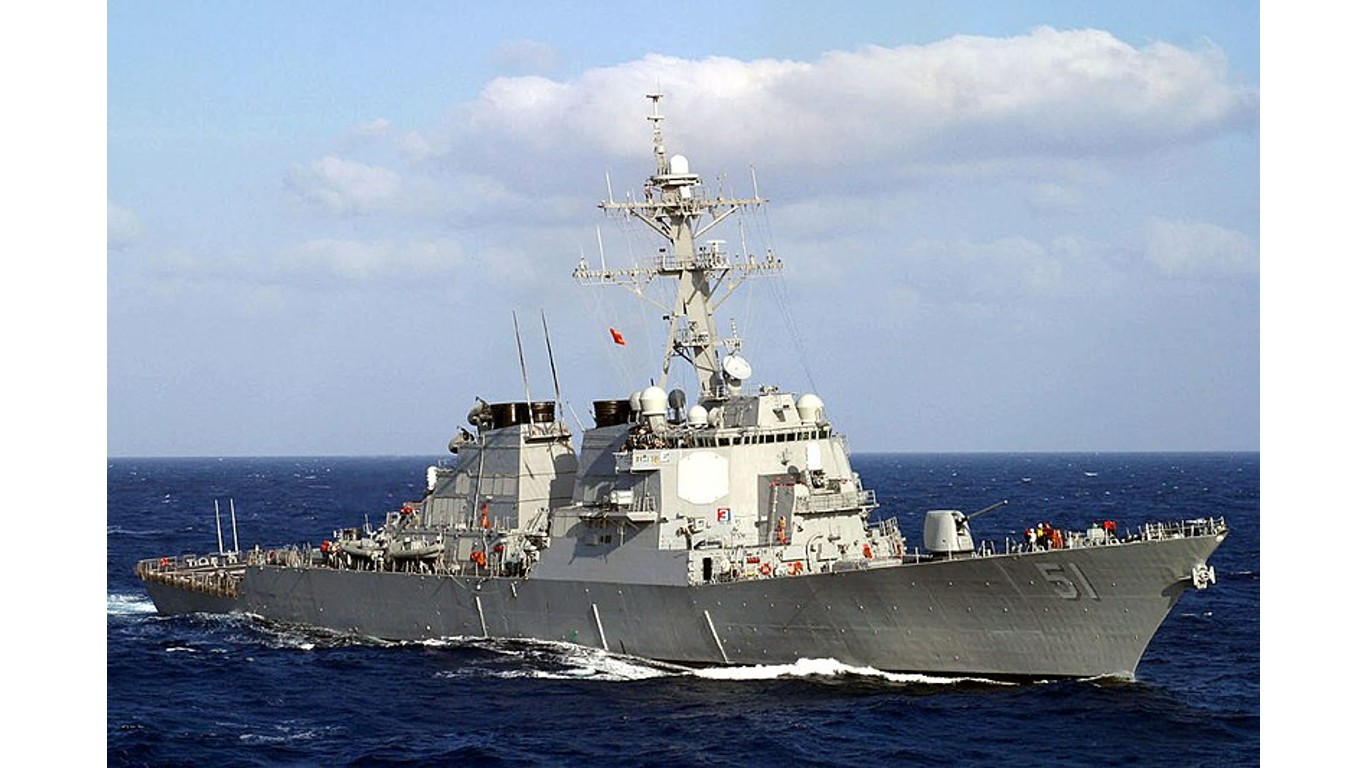
Published:
Last Updated:

The Gerald R. Ford Carrier Strike Group has been deployed to the Middle East, just off the coast of Israel, in an attempt to bring stability to the region as the Israel-Hamas war continues. This carrier group also includes a few Arleigh Burke destroyers and a Ticonderoga-class guided missile cruiser. The U.S. Navy has many more ships at its disposal.
Currently, the U.S. Navy consists of 243 warships and submarines that occupy a variety of roles. The Gerald R. Ford-class and Nimitz-class aircraft carriers serve primarily to deploy and house fighter jets. Ohio-class submarines act as a nuclear deterrent with 20 or more Trident I/II nuclear ballistic missiles onboard each, and San Antonio-class amphibious transport decks ferry troops and vehicles across the sea. Each plays an important role in how the U.S. Navy operates. (These are the 7 world powers with aircraft carriers. ranked.)
To identify the 19 classes of ships and submarines of the U.S. Navy, 24/7 Wall St. referenced military data site World Directory of Modern Military Warships’ directory of all active ships in the U.S. The ship and submarine classes are ranked in order of the number of vessels currently in active use by the Navy, according to WDMMW. Any ships on order were excluded.
Out of all the classes of U.S. warships, the most common is the Arleigh Burke-class destroyer, which boasts 68 vessels in its class. This boat is armed with a series of Tomahawk cruise missiles, torpedoes, and turret deck guns. It was first introduced in the early 1990s and has been the staple destroyer for the U.S. Navy ever since.
Under the water, the Los Angeles-class attack submarine is the most widely used by the U.S. Navy. Entering the service during the Cold War, the Los Angeles-class was intended for anti-submarine operations. These submarines are outfitted with torpedoes, Harpoon anti-ship missiles, and Tomahawk cruise missiles, which can reach targets roughly 1,500 miles away. (This is the nation with the most military submarines.)
Here are the 19 classes of warships and submarines of the U.S. Navy.
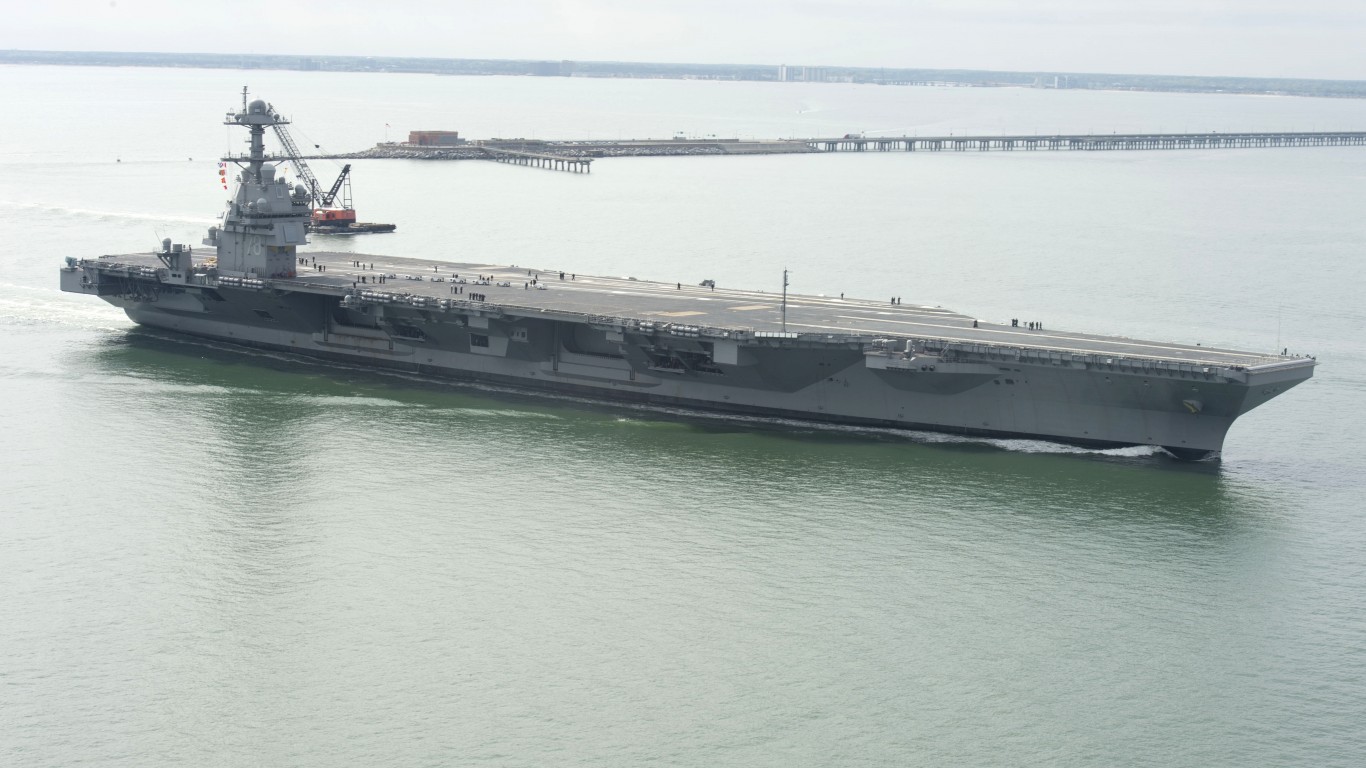
The Ford-class of aircraft carriers has been dubbed the next generation “supercarrier,” building on the innovations of the Nimitz-class, which was introduced more than half a century ago. The flagship of this class, the Gerald R. Ford, is able to house at least 75 aircraft of various makes and models, including helicopters and unmanned aerial vehicles. Although this ship is not as well armed as many others within the U.S. Navy, its aircraft more than make up for that. More of these aircraft carriers are in production, namely the John F. Kennedy and Enterprise.
The America (LHA-6) is one of two ships in the America-class of amphibious assault ships. This ship has a crew of just over 1,000 and is capable of carrying a contingent of nearly 1,700 marines. The America-class has a flight deck that mainly supports Vertical Take-Off and Landing aircraft such as the AV-8B Harrier II or helicopters and tilt-rotor transports like the MV-22B Osprey. These ships are primarily meant to support marine operations where need be.
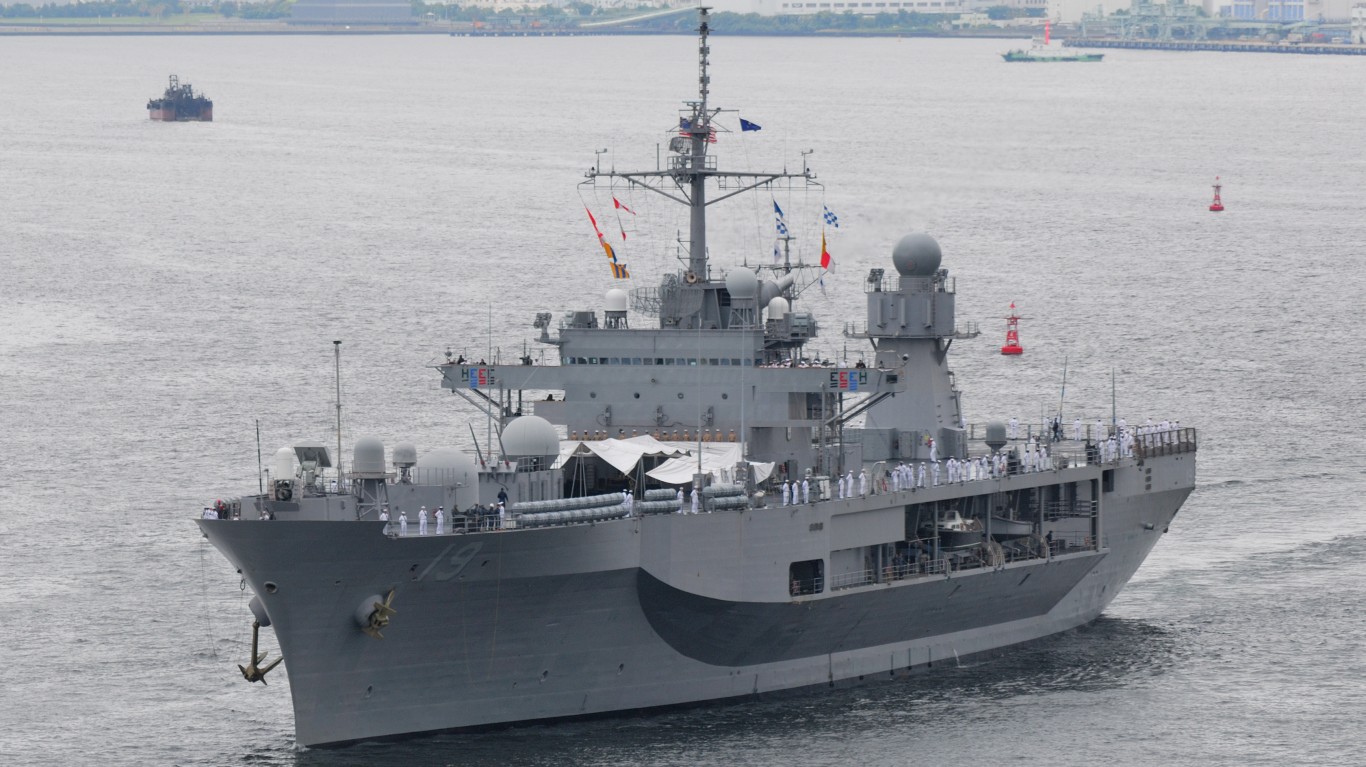
The USS Blue Ridge (LCC-19) first entered the U.S. Naval service in 1970 and was the first ship of its class. It serves in a command ship role, meaning it supports fleet actions through command, control, communications, computers, and intelligence (for short C4I). This boat houses a crew of 842 but can hold up to nearly 1,500 command staff and personnel. The USS Blue Ridge was present during the Vietnam War but more recently aided Japan following its 2011 Tohoku earthquake and tsunami.
The Zumwalt-class only recently entered U.S. Naval service in 2016. These ships have a sleek new design that distinguishes them from other classes of destroyers. Zumwalt-class ships also tend to be smaller with only a displacement of 14,564 tons and a crew size of 140, which compares to the Gerald R. Ford aircraft carrier with a displacement of 112,000 tons and a crew of 4,660. However, there have been cost concerns among other issues with this class, and production has been halted. It is likely there will be no more Zumwalt-class ships coming in the future.
The Seawolf-class of attack submarines entered the Navy in 1997. At first, orders for this class were expected to be nearly 30, but only three were actually produced. These ships were expected to replace the Los Angeles-class of submarines from the Cold War era, but the Virginia-class was ultimately designated to be the attack submarine of choice going forward for the U.S. Navy.

The Harpers Ferry-class of ships entered service in the late 1990s and generally act as a command-and-control center for the forces they deploy. This class of dock landing ship is capable of delivering landing craft and other amphibious assault vehicles as well as Marines. Originally, these ships were built in New Orleans by Avondale Shipyard, which ceased shipbuilding operations for the U.S. Navy in 2014.
The hull number that comes with this class is LHD, which stands for “landing helicopter dock.” Each ship in this class cost roughly $822 million to procure. The Wasp-class is primarily used for housing aircraft, landcraft, and other smaller watercraft. Outside of this, these ships are outfitted with sophisticated communication systems to run command-and-control for land and sea missions.
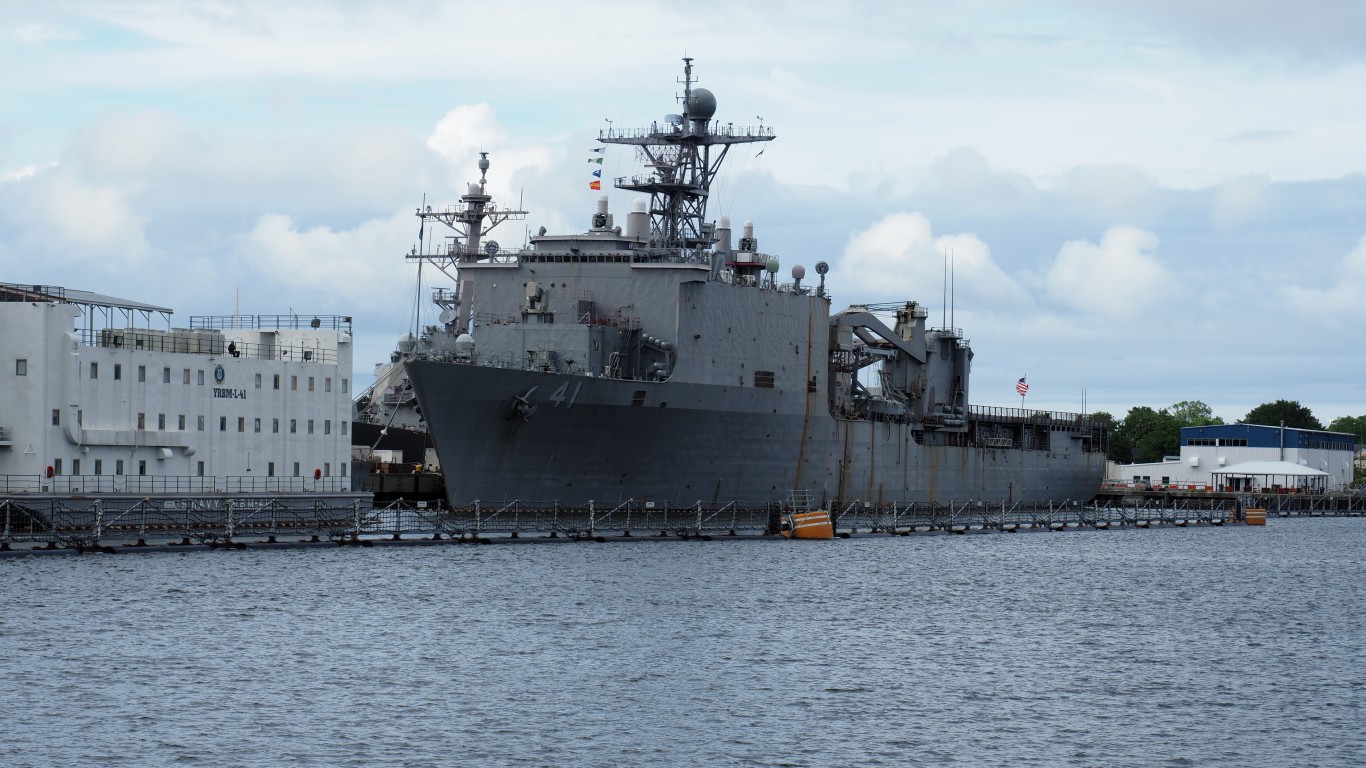
The Whidbey Island-class of dock landing ships act as both aircraft carriers and troop carriers. Not nearly as large as the Nimitz or Ford classes, the Whidbey Island-class measures roughly half the size of those carriers. It is capable of handling a crew of anywhere between 200 to 300, with a complement of up to 500 marines.
Out of the ships listed here, the Avenger-class mine countermeasures ship is one of the smallest. With a crew of less than 100, this ship is less than a quarter of the size of the Navy’s largest ship, the Gerald R. Ford. The Avenger-class is outfitted with AN/SSN-2 Precise Integrated Navigation System and AN/SQQ-32 Mine Hunting Sonar System, AN/SPS-55 Surface Radar System, and AN/WSN-2 Gyro Compass, as its primary sensor systems.
The Freedom-class is a littoral combat ship, meaning it is a fast, mission-focused platform intended for near-shore or relatively shallow environments. These ships have a total displacement of roughly 3,000 tons and a draught of about 13 feet, which enable it to navigate these environments. This class is one of the most recent to join the U.S. Navy as it entered the service in 2008.
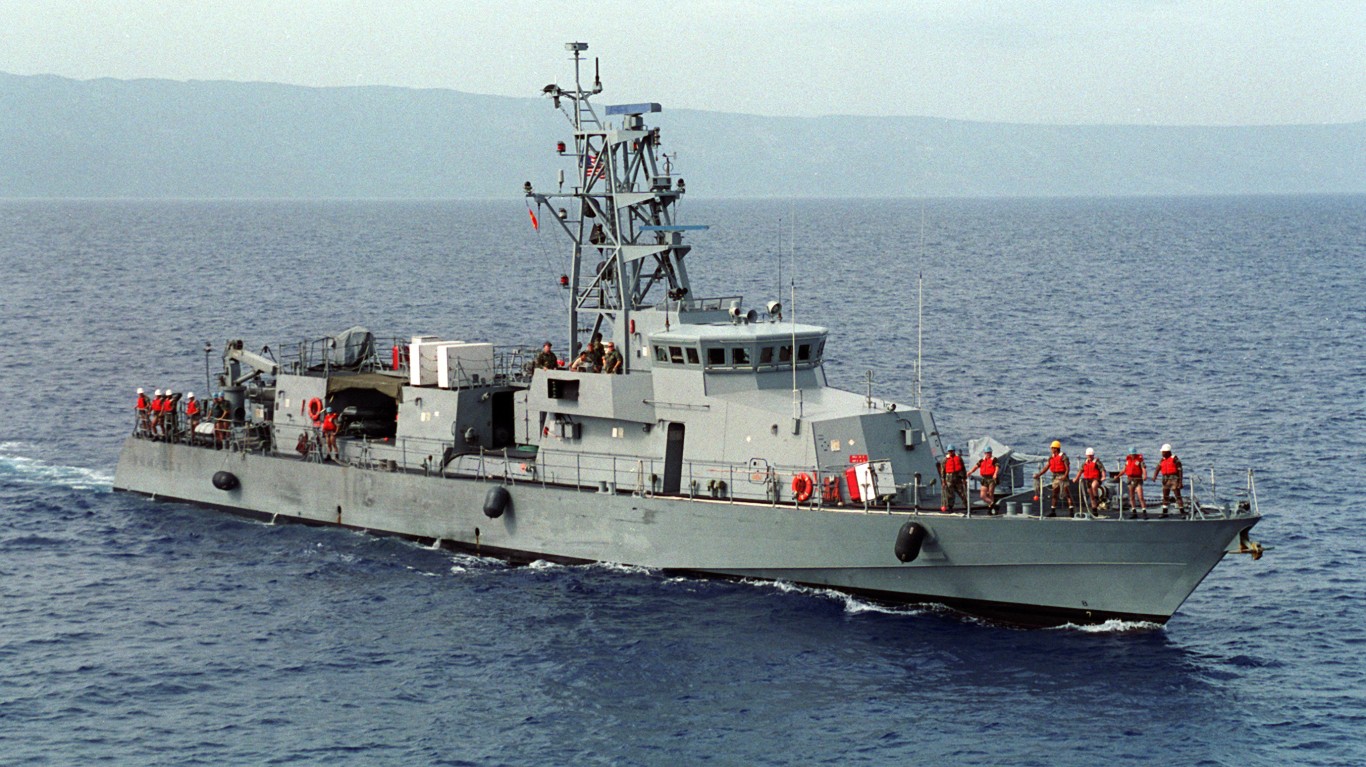
The Cyclone-class of patrol ships is the smallest series of warships in the U.S. Navy, only measuring about 175 feet long and crewed by less than 50. Accordingly, its armament reflects its size. Cyclone-class ships are outfitted with Stinger missiles, automatic grenade launchers, and a series of machine guns ranging from 12.7mm to 7.62mm calibers.
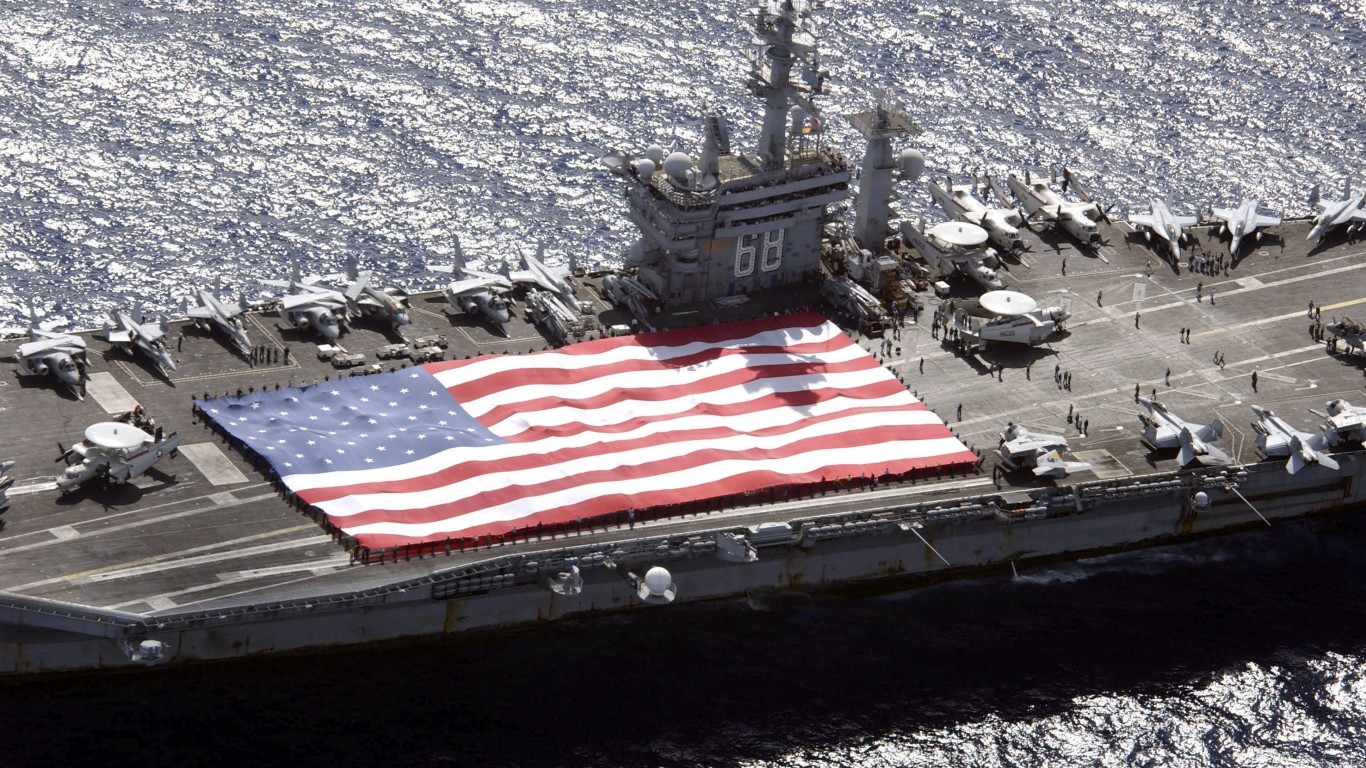
The Nimitz-class aircraft carriers emerged in the 1970s, coming from a strong naval tradition. Aircraft carriers turned the tide of World War II in the Pacific Theater and have ever since been a staple of the U.S. Navy. Building on WWII technology, the Nimitz class allows for better radar, more aircraft, and overall longevity. These carriers can carry about 90 aircraft, namely fighter jets and some rotary aircraft like helicopters or Ospreys. The Nimitz-class has since been discontinued, and the U.S. Navy is moving forward with the Ford-class aircraft carriers.
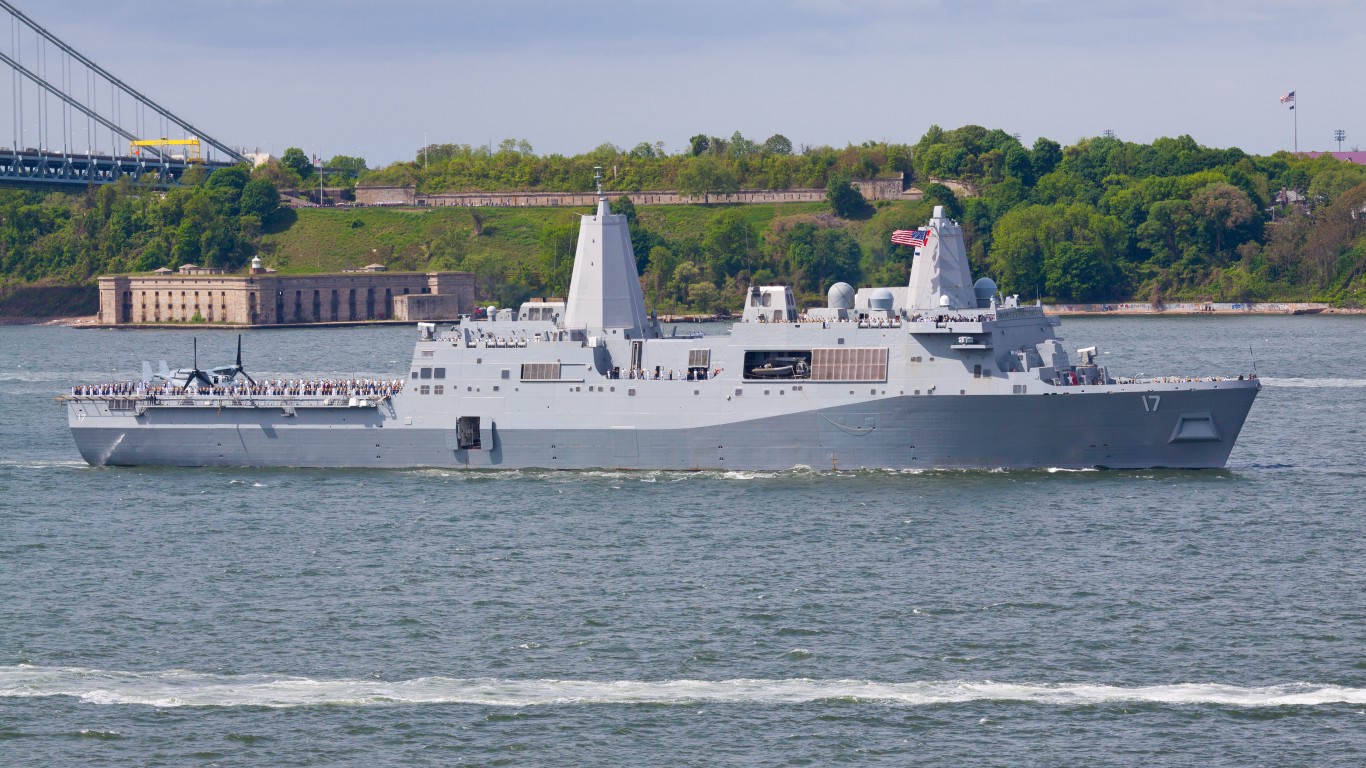
The LPD hull designation for the San Antonio-class stands for “landing pad dock” and as such it houses troops, aircraft, and some smaller watercraft. These ships have a crew of just under 400 naval personnel and can carry an additional 700 Marines. These ships first entered the service in 2006.
The Independence-class is the other series of littoral combat ships in the U.S. Navy besides the Freedom class. These are equipped with seaborne stealth technology as well as protected communications. This class in particular has deep sea capabilities outside of its traditional littoral roles. The Independence-class sports a AGM-175 Griffin air-to-surface kinetic missile launcher and a RIM-116 SeaRAM Close-in Weapon System, as well as a series of heavy machine guns.
Ohio-class submarines are a key part of the United States’ nuclear-deterrent triad. Each carries at least 10 Trident ballistic missiles, all containing a heavy nuclear payload. These submarines have a crew of around 150 and are just over 550 feet long. With a nuclear reactor powering the submarine, the range of this class is practically limitless, and the only reason to come to port is to resupply. Otherwise, the Ohio-class could stay out at sea indefinitely.
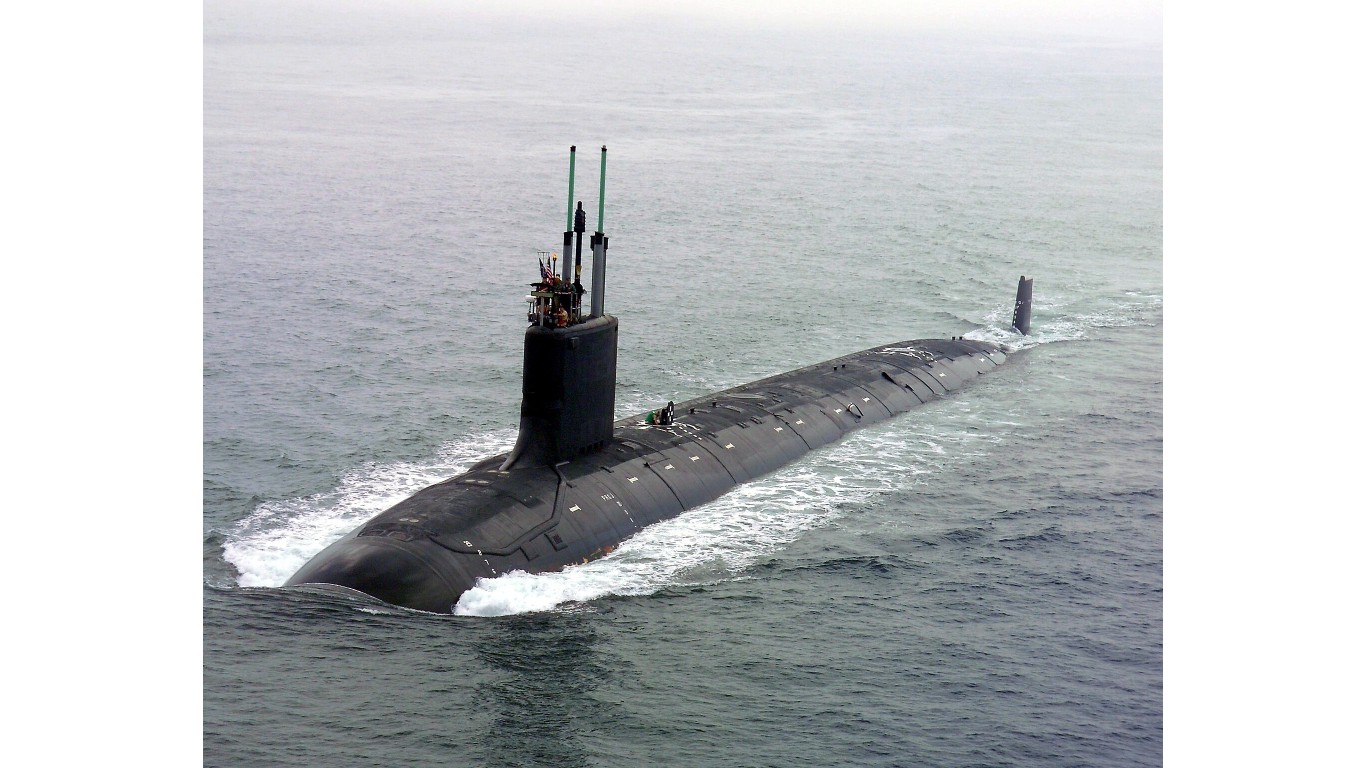
The Virginia-class attack submarine entered service in 2004. This class sports a series of Tomahawk cruise missiles as well as Mk-48 torpedoes as its primary armament. The USS Virginia, the lead submarine of its class, played important roles in the Iraq and Afghanistan conflicts. The submarine measures just under 400 feet and is crewed by over 130 naval personnel.
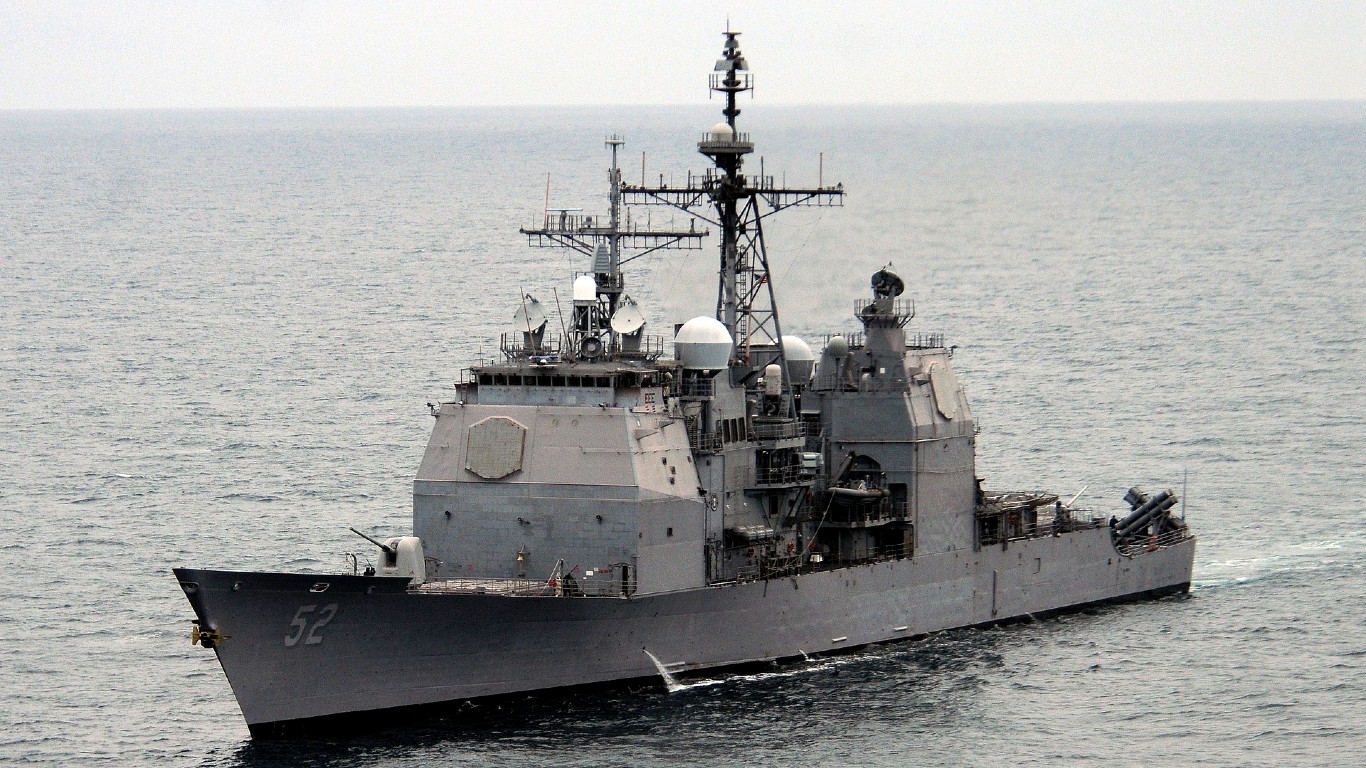
The U.S. Navy has diminished the role of the cruiser in recent years, with the last standing class the Ticonderoga. This class of warship is best known for being one of the first outfitted with the AEGIS missile system, which acts as a defense system for short-to-intermediate-range ballistic missiles. These ships only entered the fleet in the early 1980s, but there may not be much more time left for them as the U.S. Navy is moving in a different direction.
The Los Angeles-class submarine counts as the biggest submarine class in the United States Navy. Originally entering service in the 1970s, these submarines were meant to counter Russian threats during the Cold War. This class was meant to be phased out by the SeaWolf-class in the 1990s, but this never came to fruition and most of the Los Angeles-class submarines are still in service today.
The Arleigh Burke-class is the most numerous vessel in the modern U.S. Navy by far. These guided-missile destroyers are designed for multiple roles, including aerial, land, and undersea combat. These vessels can operate independently or as part of a larger task force or strike group. The Arleigh Burke-class is outfitted with vertical launch Tomahawk cruise missiles, torpedoes, and anti-air heavy machine guns.
The average American spends $17,274 on debit cards a year, and it’s a HUGE mistake. First, debit cards don’t have the same fraud protections as credit cards. Once your money is gone, it’s gone. But more importantly you can actually get something back from this spending every time you swipe.
Issuers are handing out wild bonuses right now. With some you can earn up to 5% back on every purchase. That’s like getting a 5% discount on everything you buy!
Our top pick is kind of hard to imagine. Not only does it pay up to 5% back, it also includes a $200 cash back reward in the first six months, a 0% intro APR, and…. $0 annual fee. It’s quite literally free money for any one that uses a card regularly. Click here to learn more!
Flywheel Publishing has partnered with CardRatings to provide coverage of credit card products. Flywheel Publishing and CardRatings may receive a commission from card issuers.
Thank you for reading! Have some feedback for us?
Contact the 24/7 Wall St. editorial team.